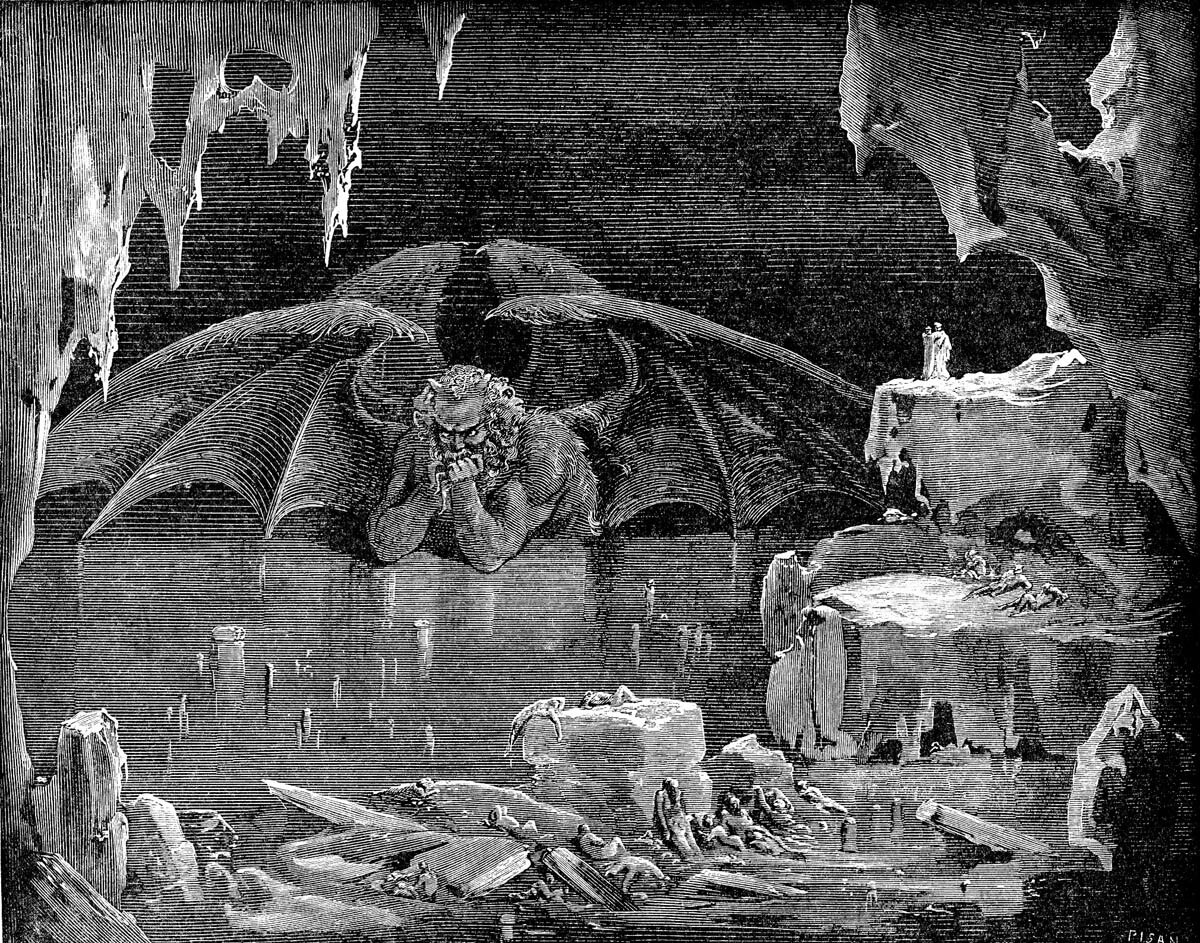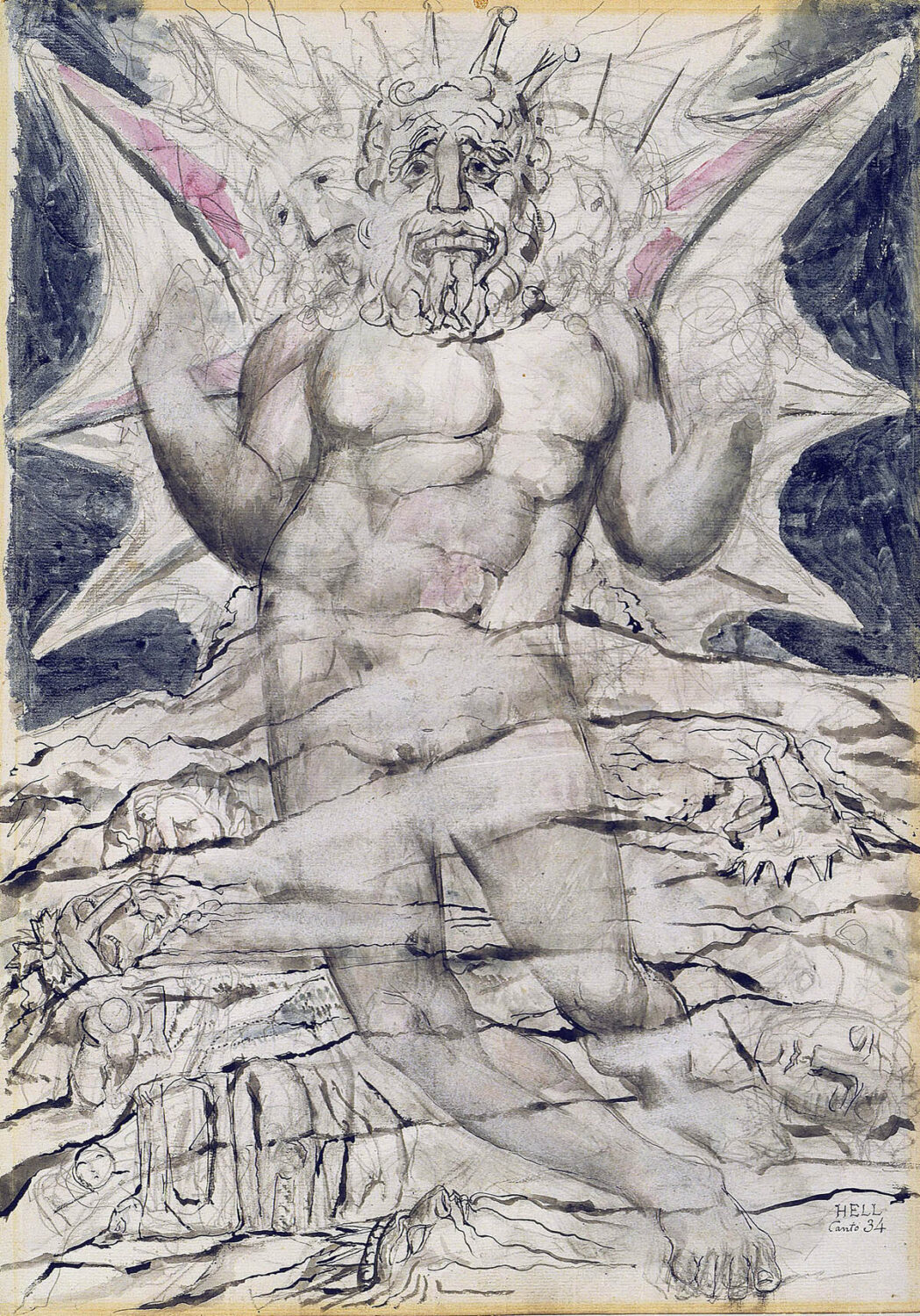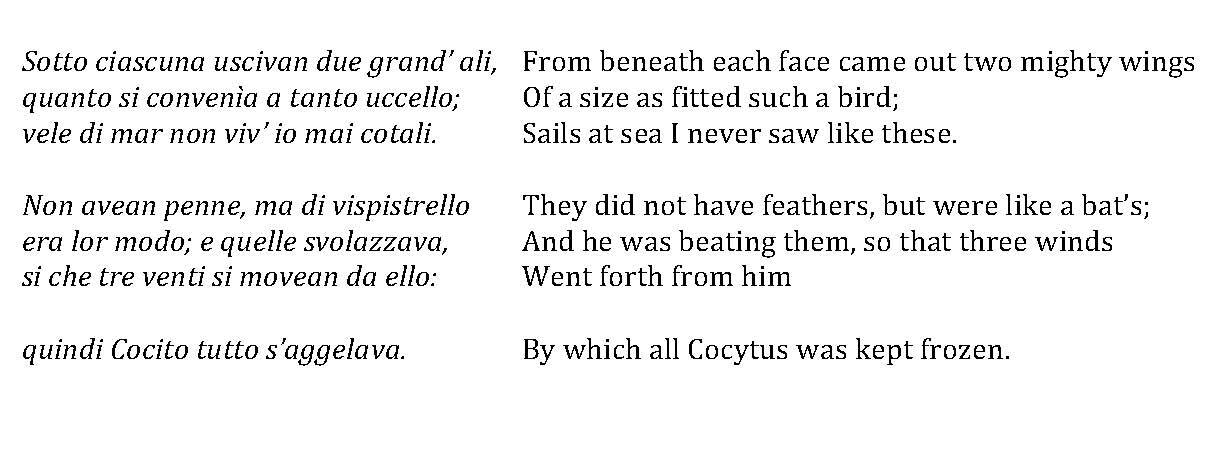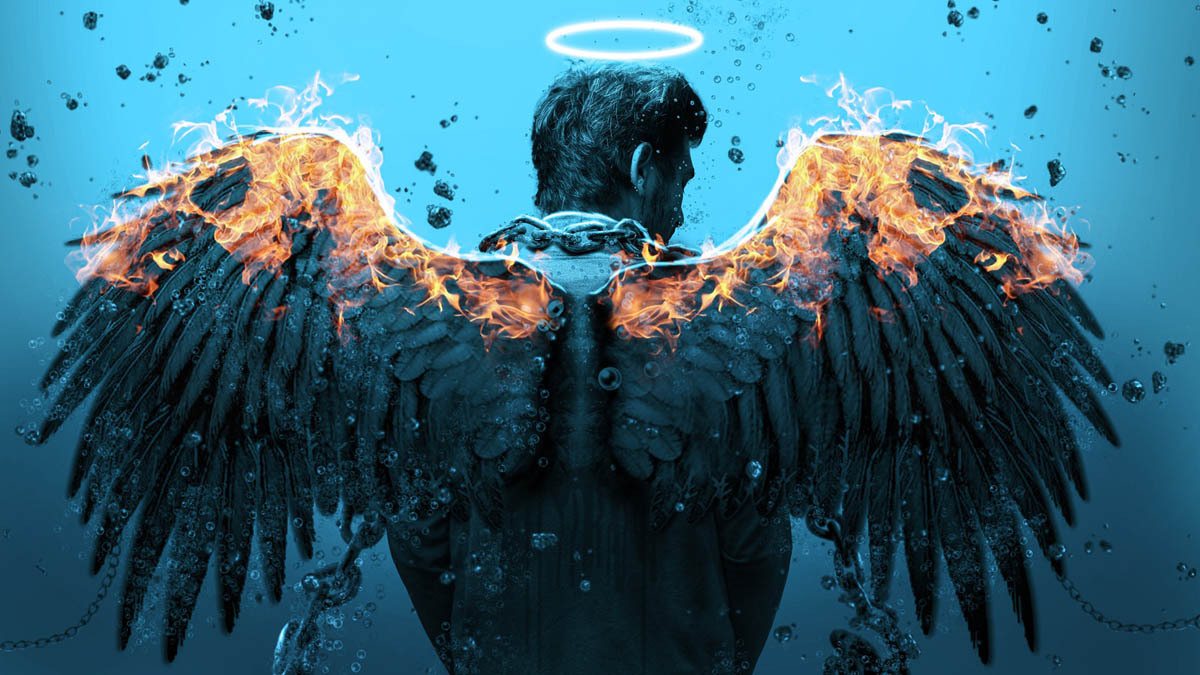
In the final canto of the Inferno Dante must confront Satan, where he lies trapped in ice at the centre of the material world and the universe.
The deepest part of hell, the ninth circle, is Cocytus, a frozen lake shrouded in thick fog and blasted by icy winds. It is fitting that this place of greatest evil is cold, for it is a place of isolation from all that is human, a place where all the ties that bind us are severed. Punished here is the sin of treachery – the betrayal of those who should have been able to trust us. The four concentric zones of Cocytus punish treachery to family, to country or cause, to guests, and to lords and benefactors. Lowest of the four is Judecca, named after Judas Iscariot, who betrayed the Son of God. The souls here are wholly encased in ice, come festuca in vetro, “like straws in glass”. They are permitted no movement, no utterance of their pain, and are not identified, as the thickness of the ice prevents all communication with the two poets as they walk over the lake’s surface.
Straining his eyes through the fog, Dante sees a ghostly shape that looks, and moves, like a giant windmill. Then the wind freezes him and he retreats behind Virgil for shelter. Virgil tells him he must arm himself with courage, the first virtue needed when confronting evil. This merely makes Dante all the more fearful, the chill of evil penetrating his very being:

But he has enough courage to look up and it is then that he comes face to face with “the Emperor of the woeful kingdom”, encased in ice up to his chest.
It’s difficult, in our time, to take the giant three-headed figure of Satan seriously, and I’m not even sure that Dante himself meant us to do so. Satan is grotesque and pitiful, yes, but also ridiculous, the butt of a monstrous cosmic joke.

Dante’s depiction takes its cue from Isaiah: “How art thou fallen from heaven, O Lucifer, son of the morning!” (Isaiah 14: 12). Created “the noblest of all creatures”, Satan was once the greatest of the Seraphim, the rank of angels closest to God. Now, on account of the pride that made him revolt against the divine order, he is an ugly monster, cast down to the place that is remotest from God, where matter is densest. Stuck in ice up to his middle, he beats his bat-like wings in a vain bid to fly back up to heaven. In a supreme irony, it is the beating of his wings that makes the wind that keeps the ice frozen. Were he to give up, to stop struggling and surrender to God, the ice would melt, enabling him to regain his place at God’s side:


Tears and bloody foam on each of the three faces tell of Satan’s eternal pain and rage. In each of his jaws he chomps on a sinner: Judas Iscariot, who delivered Jesus up for trial and crucifixion, is in head first and just has his feet protruding, while Brutus and Cassius, who murdered Julius Caesar, the first in the line of Holy Roman Emperors who are guardians of the secular order, have their heads hanging out.
Virgil is factual and dispassionate, speaking more like a tour guide than a spiritual teacher when he identifies these sinners. And he quickly brings the visit to an end, by reminding his charge that time is short and they have a long way to go. The evil at the centre of the world is anti-climactic and, to echo Hannah Arendt, banal; once you have got over your fear, there is nothing much there. Tick it off the list and move on.
And that is just what the poets do, in a graphic and moving image of the soul’s deliverance from evil. Virgil bids Dante clasp him round the neck, then catches hold of Satan’s shaggy flanks and, carrying Dante, descends “from tuft to tuft, between the matted hair and the frozen crusts”. Thus, as he meets the final challenge of sin, Dante’s reason acts as a shield between him and the tempter. Reason grapples with the Devil himself! And, thank God, reason wins!
Next, to Dante’s astonishment, Virgil turns upside down and starts climbing. Dante at first thinks they are returning to hell, but

Virgil sets Dante down on the edge of a rock. It is dark, but they are safe. As Virgil will explain, they have passed through the centre of the earth, “the point to which weights are drawn from every part”, where what we now know to be gravity is strongest. As Sinclair notes, the physical struggle to defy gravity is a metaphor for the labour and strain involved in the soul’s escape from the clutches of sin and death.
The moment of respite is short:

Virgil is a hard task master! The poets are past the worst and safe “on the other side” of sin and death. Yet there is still a long slog ahead of them, along a narrow passage through the Earth’s cold, dark interior.
“Deliver us from evil”, we say in the Lord’s Prayer. In his confrontation with Satan, Dante gives us a taste of what that means. Now his long ascent, first to reunion with Beatrice and then to union with the divine, is to begin.





